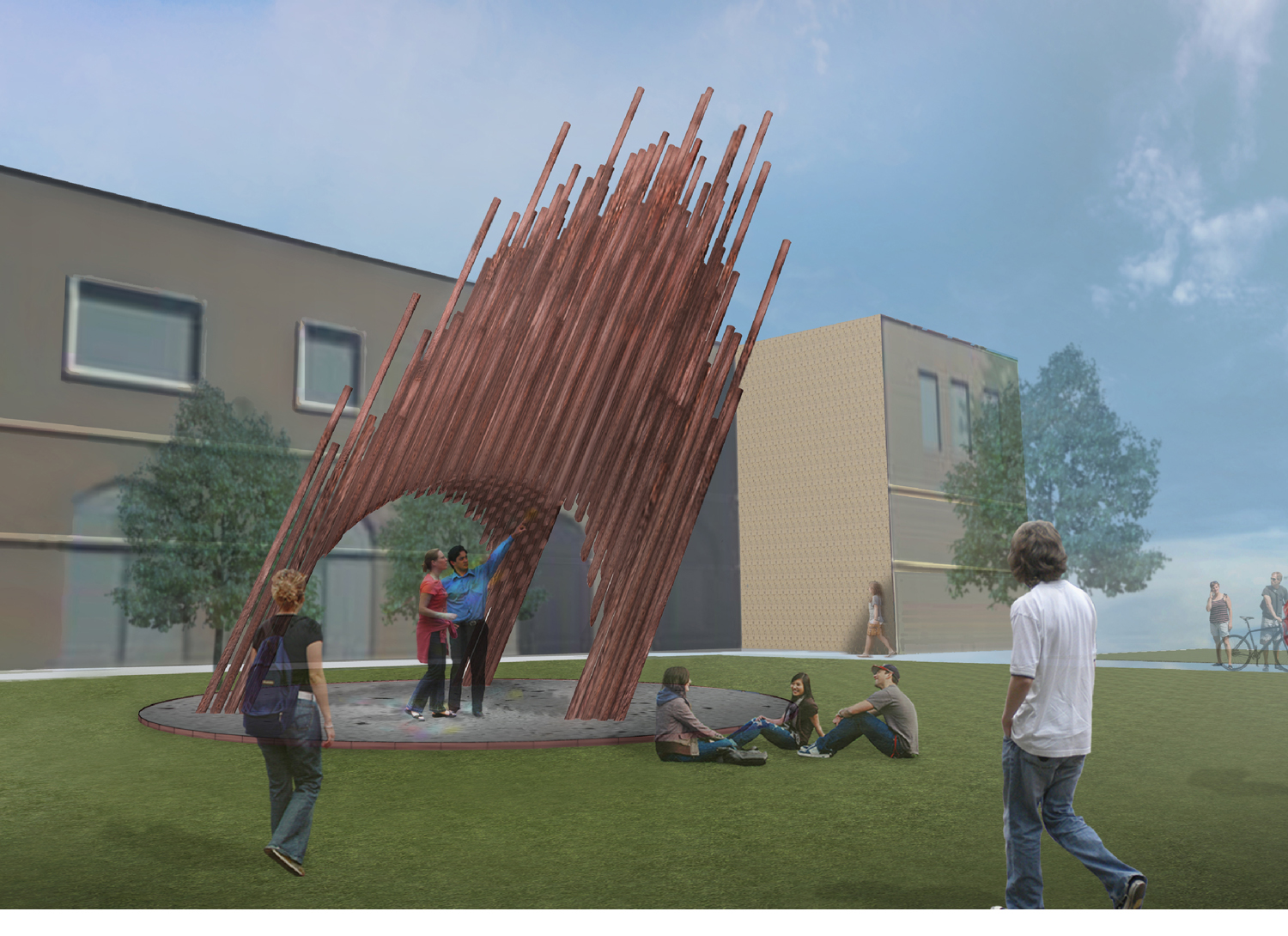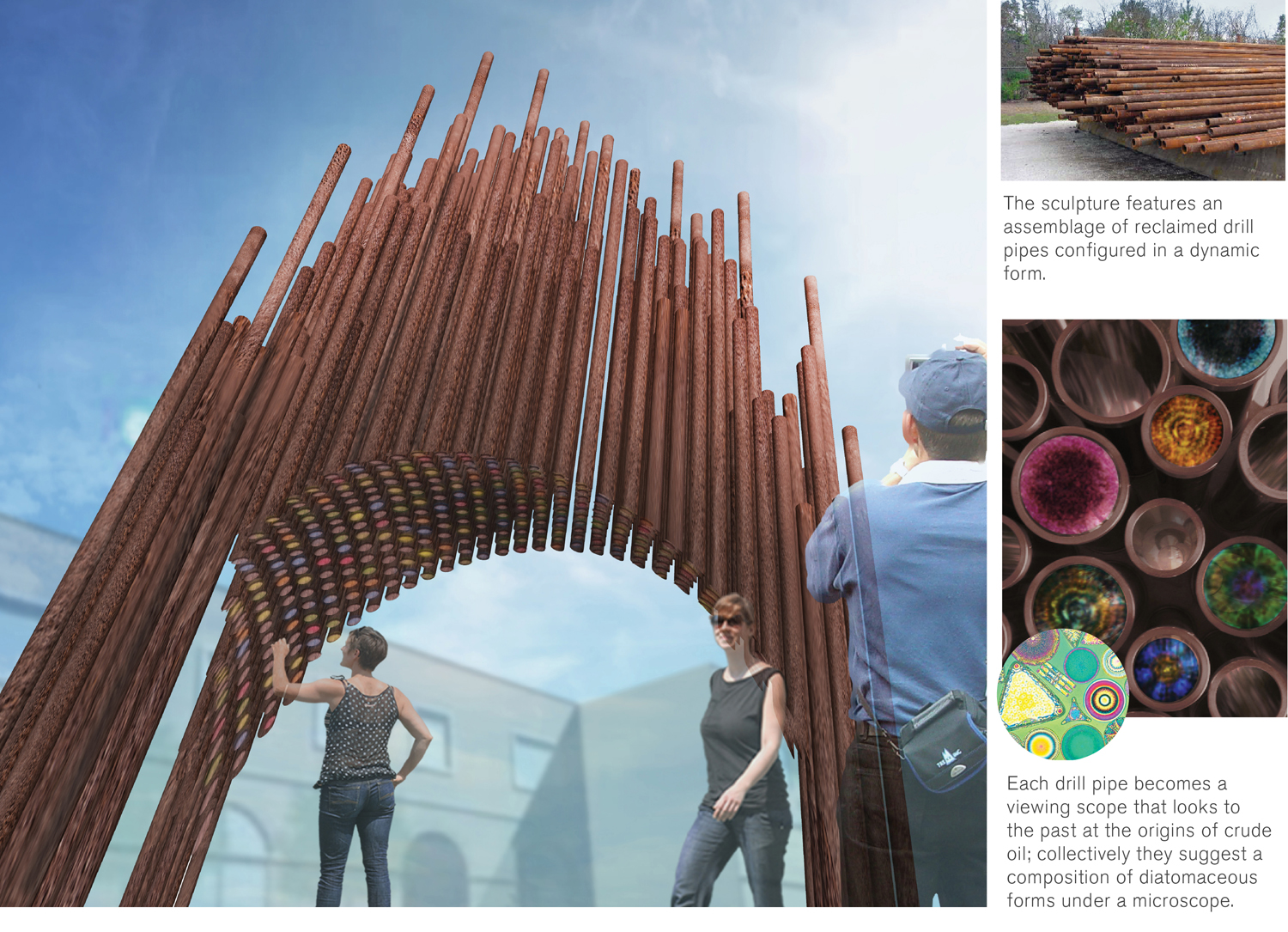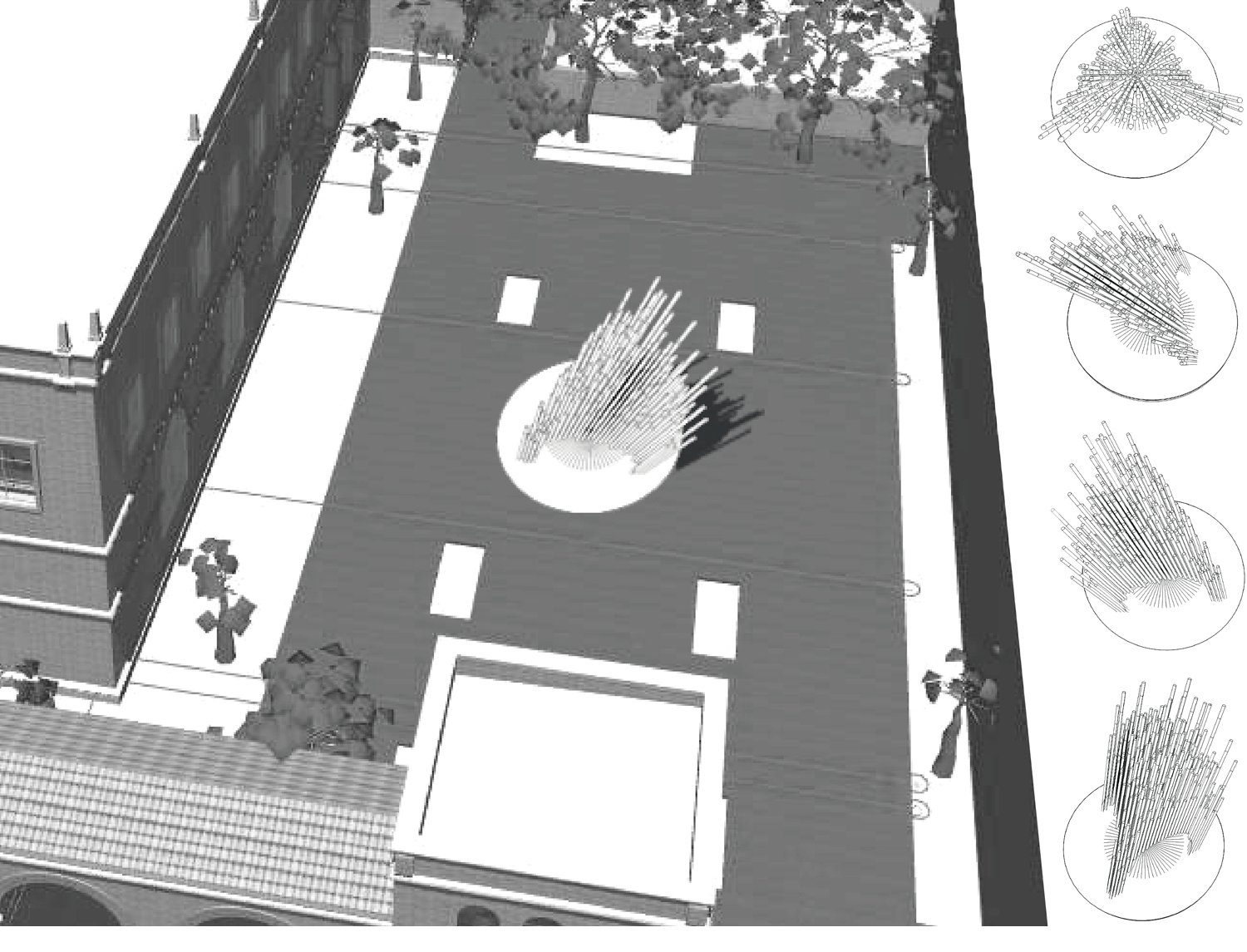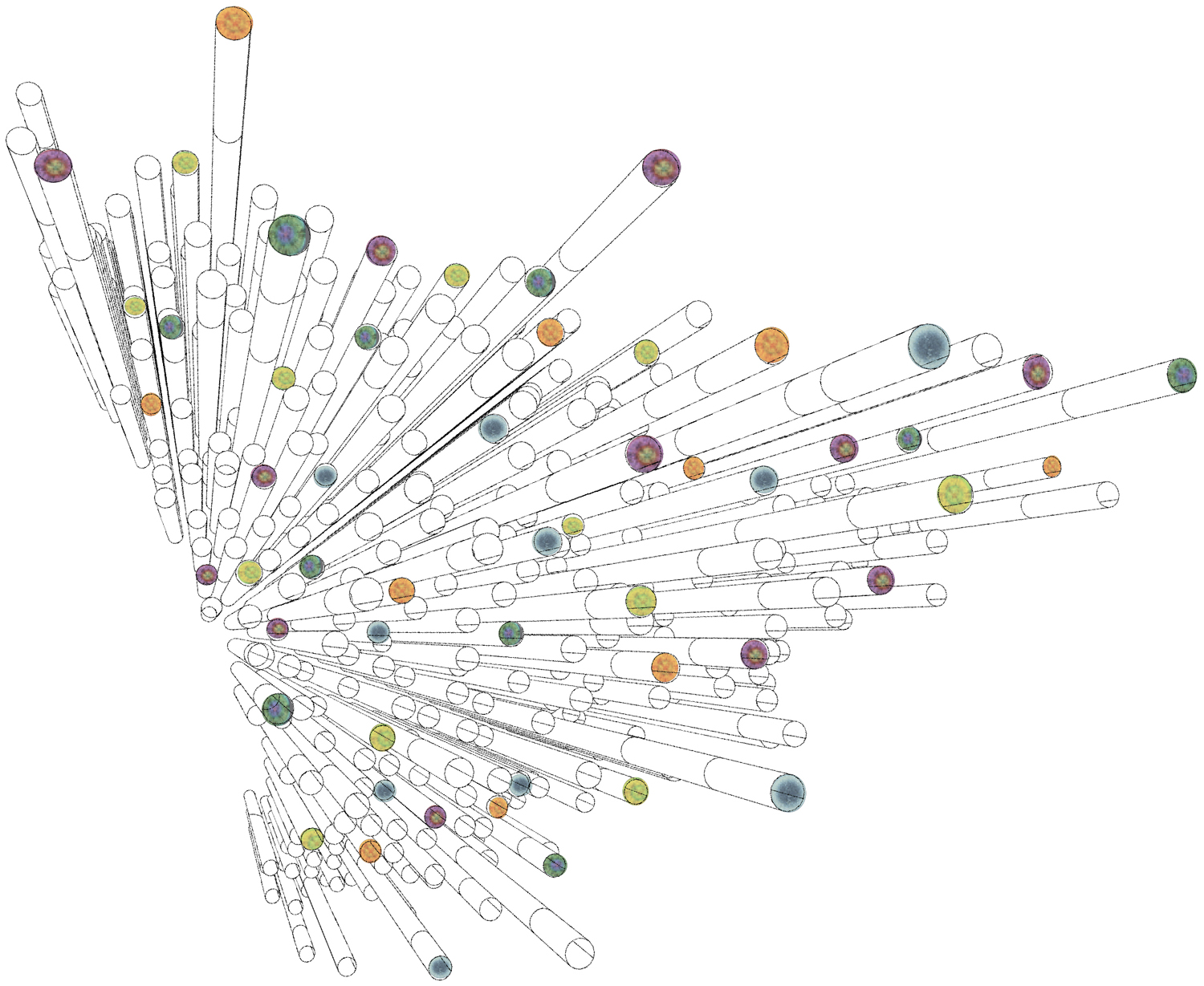



Chromatophore
Completion: 2013, Finalist
Location: Texas Tech University, Petroleum Engineering Research Building, Lubbock, TX
Description: Our concept juxtaposes petroleum’s organic past with its technological present. The sculpture features an assemblage of reclaimed drill pipes configured in a dynamic form. Each drill pipe ends in a brightly-colored discoids of bubble-infused glass. Together, they form a grotto-like space that invites visitors to explore and look through a canopy of light. The work connects two motifs that are rarely connected in the public imagination: the organic origins of petroleum in the distant past, with the technology of petroleum engineering in the present.
Each drill pipe becomes a viewing scope that looks to the past at the origins of crude oil; collectively they suggest a composition of diatomaceous forms under a microscope. This imagery evokes the algae that contributed to the generation of most of the world’s crude oil, now our society’s most important source of energy. This canopy of light evokes the photosynthetic origins of petroleum. Connecting past with the present, the sculpture juxtaposes the industrial material of petroleum engineering with the ephemeral qualities of light.
Within this assemblage of drill pipes, a grotto-like space is seemingly carved out of the center, resembling an anticline geological formation where oil and gas is found. Within this space, light transmits through multicolored glass discs to cast vibrant circular shapes on the ground below. This inner space invites visitors to explore and look through a canopy of light. As the sun moves over the sculpture at a certain time of day, the projected colored circles wash over the ground and passersby. The colors are inspired by the various hues of zooplankton and algae in the ocean. As visitors gaze upwards, the inner surface of the sculpture suggests a frustule, the hard and porous cell wall of diatoms.
Entitled after the pigment-containing organelles where photosynthesis takes place in diatoms, Chromatophore seems to be a juxtaposition of opposites: industrial and organic, past and present, the subterranean with ethereal light. But in fact, the work represents a convergence of ideas – drill pipe is used in a deep, dark subterranean context, but in the sculpture, become conduits of sunlight. This work unifies ideas that are rarely connected in the public imagination, but are intimately connected within the petroleum field.
Architect: METALAB
